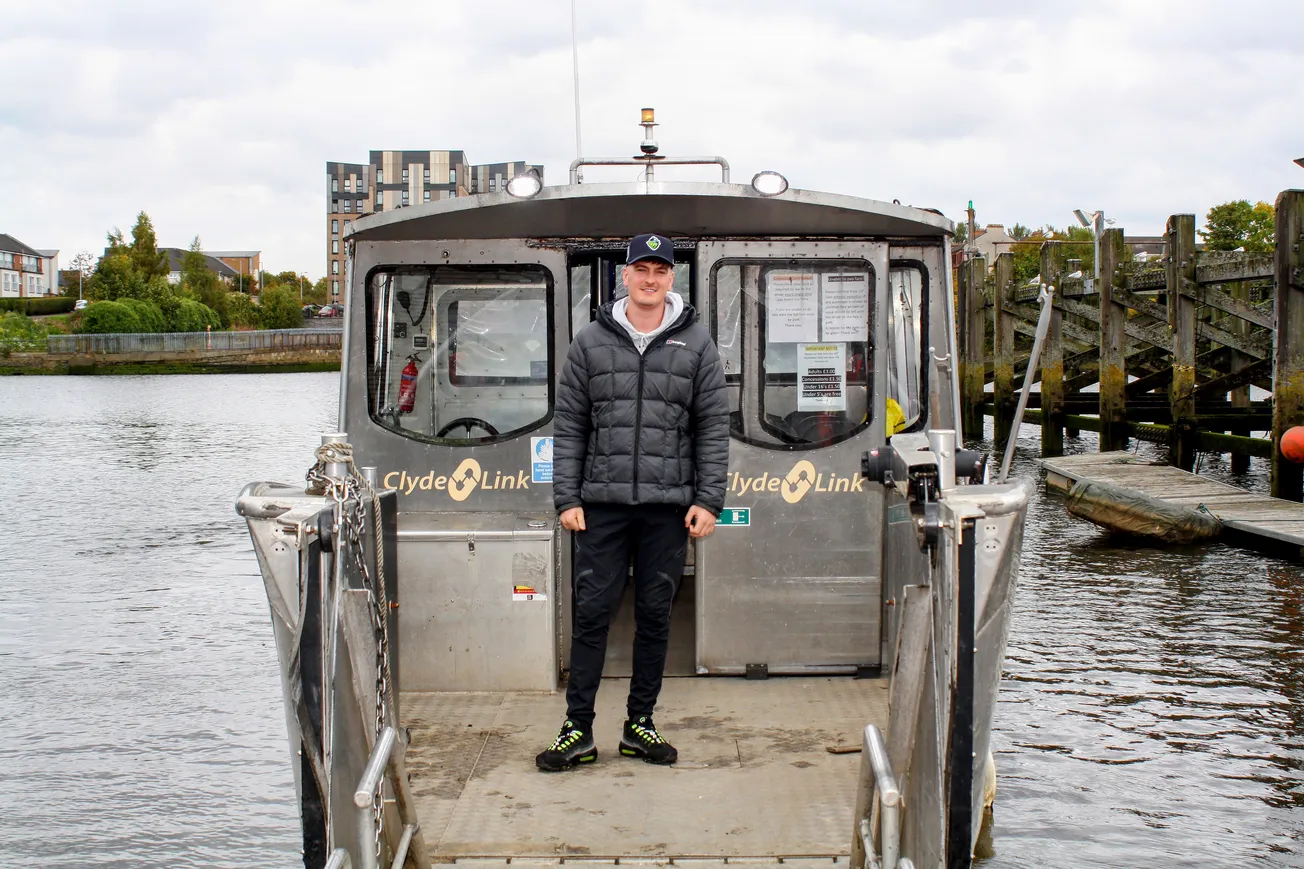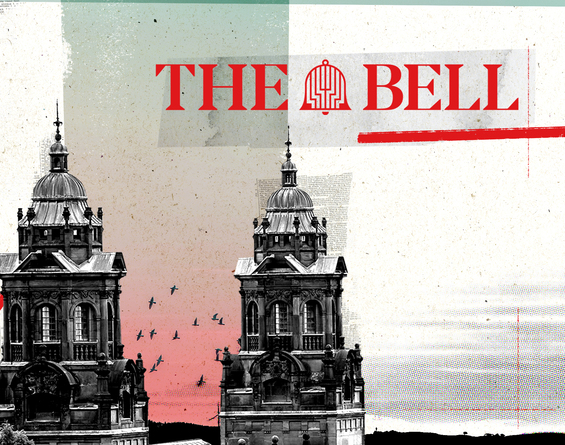Disembarking in Yoker from the Renfrew Ferry, I’m confronted with a hollowed-out brick shack, late August sun struggling through the cracks. The floor is carpeted with cans, the walls scrawled over with sectarian slogans (“FK The Rangers”), and on the outside is a mural of Dee Dee, the hapless stoner from Limmy’s Show whose uncontrollable urge to take the bus out to Yoker, just to see what it’s like, is now this Glasgow suburb’s chief claim to fame. I stop to take some photos when a gaunt couple sidle past. With a curt nod and an “awright” they disappear into the shack, hanging up a raincoat in the doorframe as though to signal occupancy. “Am no fae here,” the speech bubble next to Dee Dee’s head proclaims. I know how he feels.
This building once served as a ticket office for the ferry that runs between here and Renfrew, but it hasn’t really been needed for 40 years. Until 1984 there was a much larger car service, but the passenger operation now in place is so small that you can just pay on the boat. When I boarded on the other side of the Clyde just a few moments earlier, I handed my fare in cash to the skipper, Charlie, who waved me onto his tiny aluminium landing craft to take one of its 12 seats.
The distance between banks is less than 200 metres, and today — overcast, the river placid — it took about 90 seconds to traverse. Charlie, a cheerful young fellow with gleaming veneers, works in construction on the Renfrew side but recently took custody of the Clyde Link-operated service a few days a week, for a bit of extra regular income. By the time I roll up, Charlie has made this journey back and forth since 6.30am and will continue until 6.30pm. The service is half-hourly for most of the day, but at peak times it runs pretty much continuously, pausing only to empty and fill up with commuters on each side.
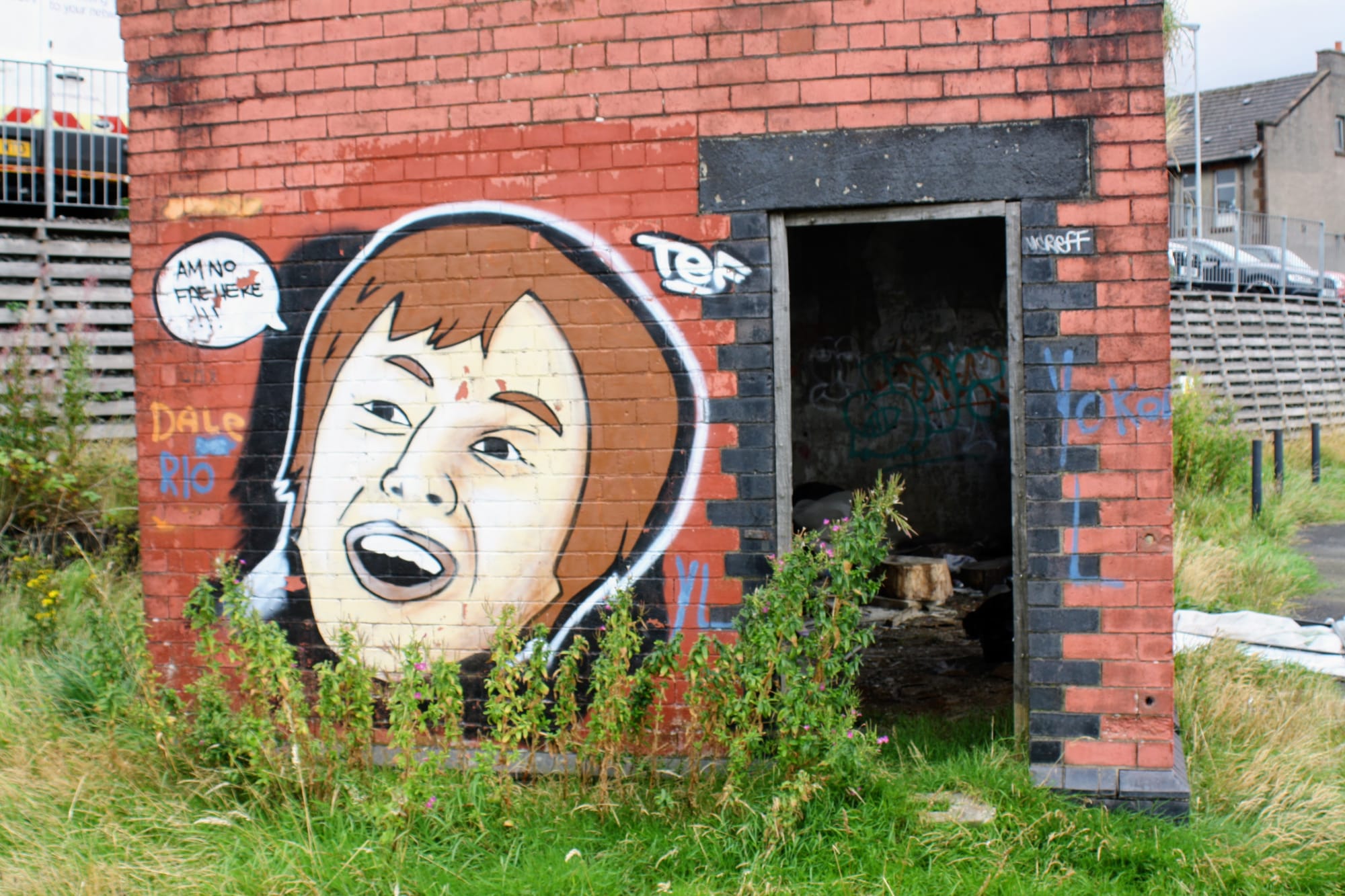
On the water, my view is dominated by the form of the Renfrew Bridge in its final stages of construction. Preternaturally white as a new pair of trainers, the road bridge — due to open this autumn — is part of the wider Clyde Waterfront and Renfrew Riverside scheme. Undertaken by GRAHAM civil engineers, the £130m project is looking to transform access between Renfrew and the neighbouring communities of Yoker and Clydebank on the north of the river, helping more people to travel for work and to hospitals, schools and leisure. Funded through the £1.13bn Glasgow City Region City Deal agreed by the UK and Scottish governments and local authorities in 2014, it has been described as a “gamechanger” by the leader of Renfrewshire Council, Iain Nicolson.
What it means for Renfrew Ferry is another question — something of a sore one for Clyde Link manager, Greg, who tells me later on the phone that he is wary of speaking to journalists on account of ‘lies’ circulating that the new bridge will phase them out. “The ferry will continue to run after the bridge opens,” he says. “That’s literally all I can say to you.”
Lost connections
The Renfrew-Yoker ferry is the last regular service to run on the Clyde, but it once formed part of a much larger network. Between 1896 and 1897, close to three million souls were transported along the river on ‘cluthas’ — harbour passenger steamers introduced in 1884 and named after the Gaelic for ‘Clyde’. The advent of electric trams and the Subway system put paid to the cluthas in 1903. Yet larger cross-river steam ferries — first seen in 1865, by which time ‘Clydebuilt’ had become synonymous worldwide with shipbuilding excellence — kept going, serving shipyards and factories between Erskine in the west and Finnieston towards the city centre.
In the 1960s, damage wrought by wartime air raids on the Clyde, and the subsequent post-war economic slump, conspired to leave the shipbuilding industries in terminal decline. In response, the Glasgow Corporation embarked on a radical rehaul of transport infrastructure, enacting some of the principles of the notorious Bruce Report of 1945 to make the city more car-friendly.
The Clyde Tunnel opened in 1963, while the inner-city section of the M8 motorway was built between 1968 and 1972, an event that still prompts the mournful refrain that this was when “the heart was ripped out of the city”. As part of the city's Comprehensive Development plans, tens of thousands of tenements were demolished and residents moved out to peripheral housing schemes, as the motorway drove a wedge between formerly contiguous areas like Garnethill and Anderston.
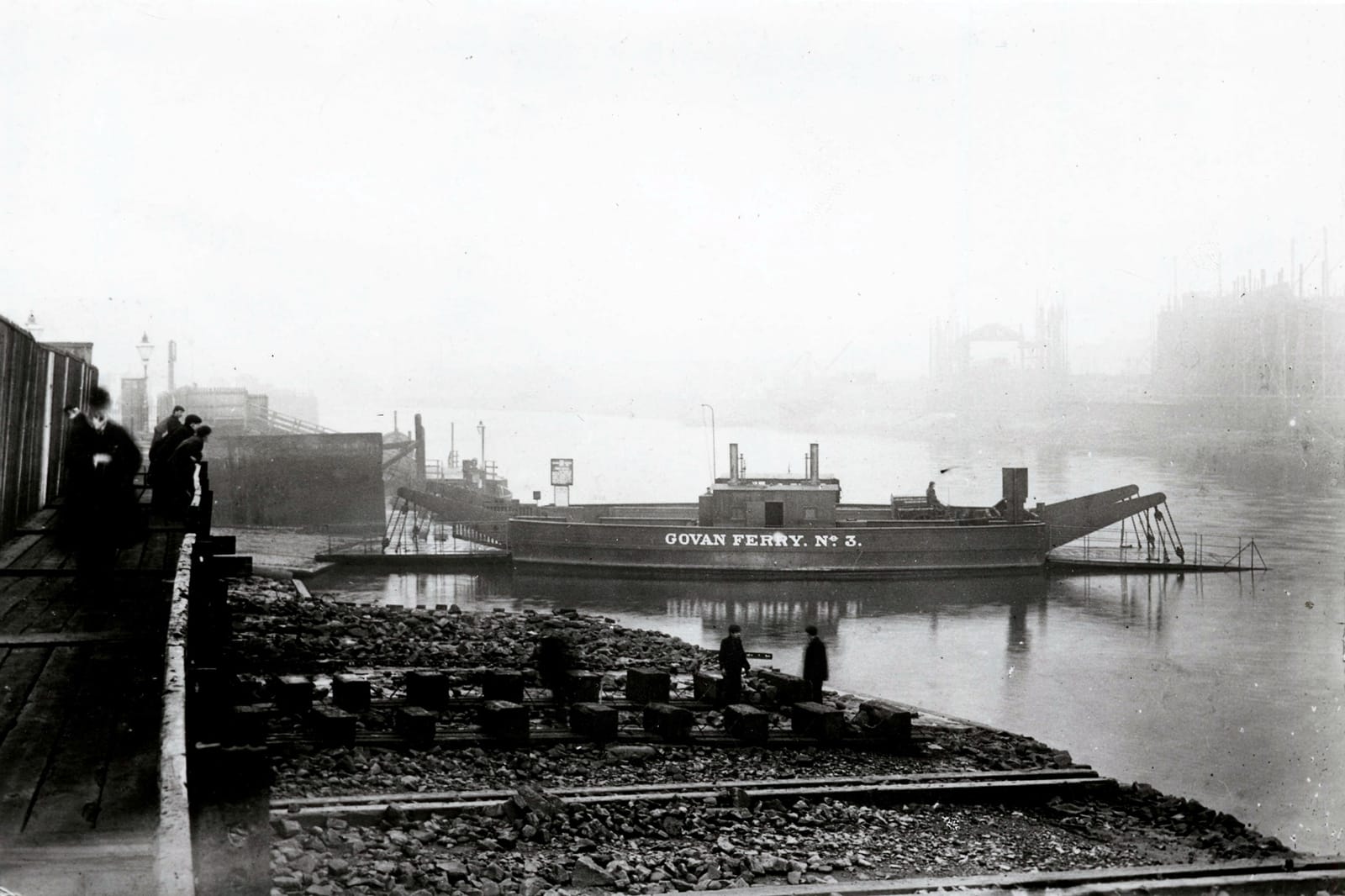
One by one, the ferries were deemed surplus to requirements. A car service kept going between Renfrew and Yoker until 1984 — there exists an extraordinary photo of its final journey, passengers milling around on deck, the old Yoker ticket office smart and proud in the background with art-nouveau tiling and a bright blue door. A local resident on the Renfrew side tells me that the “wee passenger boat” is fine and good, but kids get scared when the water is choppy, and the numbers that the bigger boat could transport simply meant that more people could take up work, or travel for a night out on the other side of the river.
For the most vivid sense of the disparity that has been, if not caused, then certainly reinforced by these civic ‘improvements’, it’s necessary to head a few miles upstream to Govan. In its industrial era heyday, this parish was beneficiary to a wide-reaching programme of municipal planning; David, a volunteer with the local Fairfield Heritage Trust, tells me that there are more A-listed buildings here than anywhere else in Glasgow, save the city centre and the West End. It has always been proudly working class — it was here that Mary Barbour, a pioneer of Red Clydeside, organised the rent strikes of 1915 — but with the decline of industry, urban decay began to spiral.
If you're reading this and you haven't yet joined our free mailing list, click here to get Glasgow's new quality newspaper in your inbox every week.
In many ways, this history was mirrored north of the river in Partick and Finnieston. But the proximity of these areas to the ever-affluent West End encouraged investment and infrastructure, including the Scottish Exhibition and Conference Centre in 1985. Partick is now fast becoming studentsville; Finnieston is frequently named among the ten ‘coolest’ neighbourhoods in the UK. According to the Scottish Index of Multiple Deprivation, virtually all of Govan consistently ranks in the lowest decile in the country.
Standing on the water’s edge in Govan, your view across the Clyde is dominated by the zig-zagging zinc-clad roof of Zaha Hadid’s Riverside Museum, which opened at a cost of £74m in 2011. But of every ward in Glasgow, residents here are the least likely to visit it. Small wonder, when your options have been the subway (only eight minutes, but a return trip leaves a family of two adults and two kids without a penny’s change from a tenner), or a three-mile walk each way taking you through the dingy, desolate Clyde Tunnel.
Bridging the gap
Ten days later, at 9.57am on the morning of Saturday 7 September, the residents of Govan are gathered at Water Row to mark the long-awaited opening of the Govan-Partick pedestrian bridge. Watched by an expectant crowd, the two-part span of the bridge is swinging together; engineered to let ships continue to pass, it’s been brought to life by a £29.5m investment from the City Deal fund. Techno blares out from the soundstage; a DJ from the local charity-run radio station Sunny Govan is compering. “As we celebrate this historic moment when the two ancient communities of Govan and Partick come together – come on Govan, let’s see those jaunty swaggers!”
This is a moment of celebration, but there is also something fraught in the atmosphere. Musician and local community volunteer Louis Rive tells me that he has “mixed feelings” about the bridge. “We’re under no illusions about gentrification,” he says, vocalising the fear of many in Govan that West Enders, lured over the bridge by low house prices, will gradually displace communities that currently live here. “You can’t stop these things happening. However, you can dictate how the narrative goes.”
On stage, with partner Aqeel, he delivers a sweary rap-pop diatribe with the chorus: “Shut that bridge, don’t let them in.” It’s brash, it’s punk; it’s maybe a little on the nose. But it’s also entirely in keeping with the intentions of the Govan Bridge Festival’s director, Paul MacAlindin, who tells me what he most wants to show is that “Govan already has a culture”. As musical director of the Glasgow Barons, a Govan-based orchestra that works with communities including school groups and asylum seekers, it’s a culture he’s endeavoured to support through music, which he calls “alternative social cohesion”.
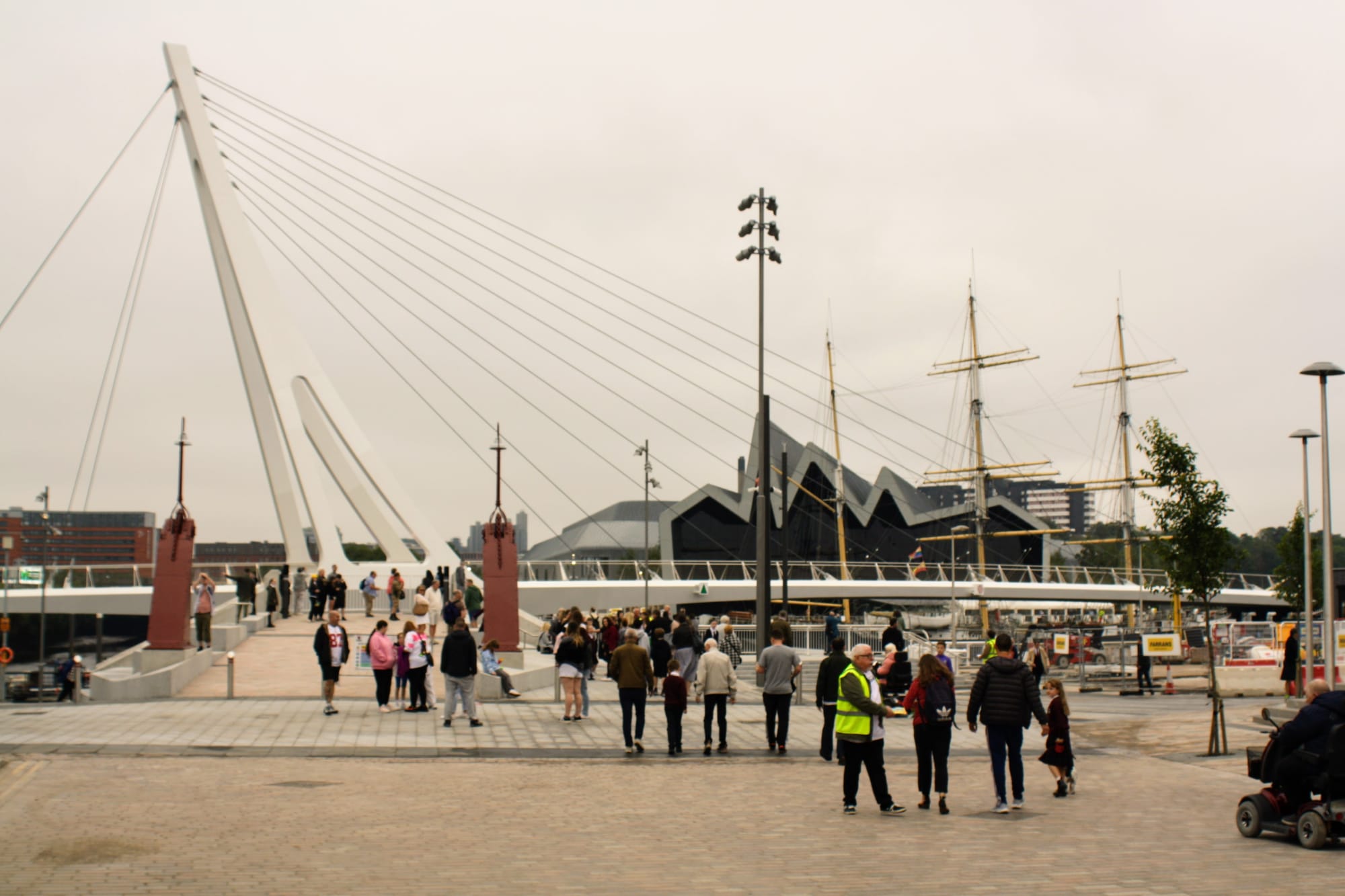
Wariness regarding government-led infrastructure schemes is understandable, given what happened when the ferry was replaced with the Clyde Tunnel, but there’s hope that the high proportion of social housing here can temper displacement. There is also optimism about the benefits of the new bridge: the opportunity to demonstrate what this long-isolated pocket of Glasgow has to offer. Other community projects with stalls at the festival include the Govancross Townscape Heritage Initiative, spearheaded by Eamonn Campbell, an urban planner for Glasgow City Council, and charged with renovating Govan’s dilapidated architecture; at the festival, his team has set out a huge map, on to which local people can draw and write their ideas for how next to focus efforts on renewal.
For Andrew Hoolachan, a lecturer in urban and regional planning at the University of Glasgow, the bridge is “fantastic, transformational”, but there is much more to be done in repairing the damage wrought by the privileging of cars over people in the infrastructure projects of the 1960s. There should be many more bridges, for one thing, he says. For another, most of Partick is set back from the river, behind the Clydeside Expressway; to get to it from Govan “you still have to go underneath a dark and scary underpass with bad signage, and that has big implications for inclusion and access”.
Land ownership is still a huge impediment — the abandoned yards where Glasgow forged ships and its industrial legacy remain largely in private hands. This, coupled with the fact that planning in the UK is principally developer-led, means that “it has been very hard for the city to put up a unified plan,” explains Hoolachan, before posing a rhetorical question: “Why is the Clyde not active?”
Back in Glasgow’s industrial prime, the Clyde was not just business; pleasure docked in its ports too. The river was a leisure space, an internationally renowned one at that, when it came to yacht racing. But where other cities have kept city life afloat atop their river surfaces, the Clyde has long been deathly quiet, a bittersweet memory that some in Glasgow would rather forget.
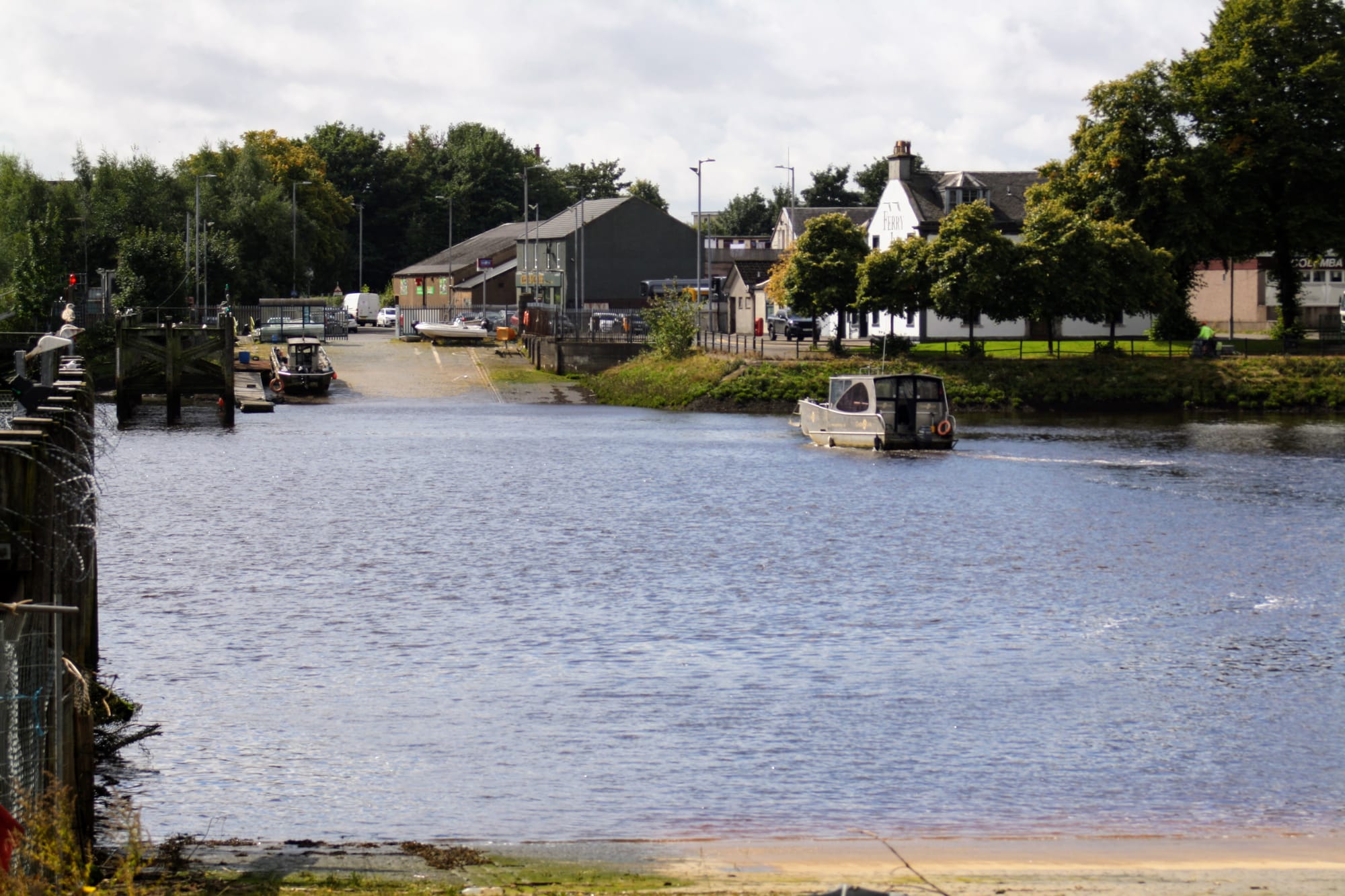
When I was in Yoker, I spent an hour walking past a boarded-up Gothic Revival church and a pack of identikit newbuild houses under construction, before heading back along the riverfront, watching the little Clyde Link service come in to land. On the return journey, a couple of swans milled around the hull. I looked east this time, back into the city, the skyline commanded by the Finnieston Crane — that great feat of engineering, that used to cantilever steam locomotives on to ships to send across the world, but which now stands as a defunct landmark.
I asked Charlie what he thinks about the new Renfrew Bridge and its effects on the business. Other than repeating the manager’s line that they’ll keep going, he told me he couldn’t really say much without checking with Greg. I asked Greg how many people make the crossing per month; he told me he needs to check with the owner, whose permission never comes.
There’s a caginess here, which I can only put down to the worry that this last vestige of transportation on the Clyde — rather than over, or under it — is destined eventually to go the way of all those before it. At least until there are other vessels to keep it company, other mechanisms for reanimating the long-dead river, I hope it can cling on because, during my 90 second ferry rides, I had a strange realisation. In a city I’ve lived in for most of my life, this blink-and-you’ll miss-it boat journey is the first time I’ve ever been out on the Clyde.
Comments
How to comment:
If you are already a member,
click here to sign in
and leave a comment.
If you aren't a member,
sign up here
to be able to leave a comment.
To add your photo, click here to create a profile on Gravatar.

